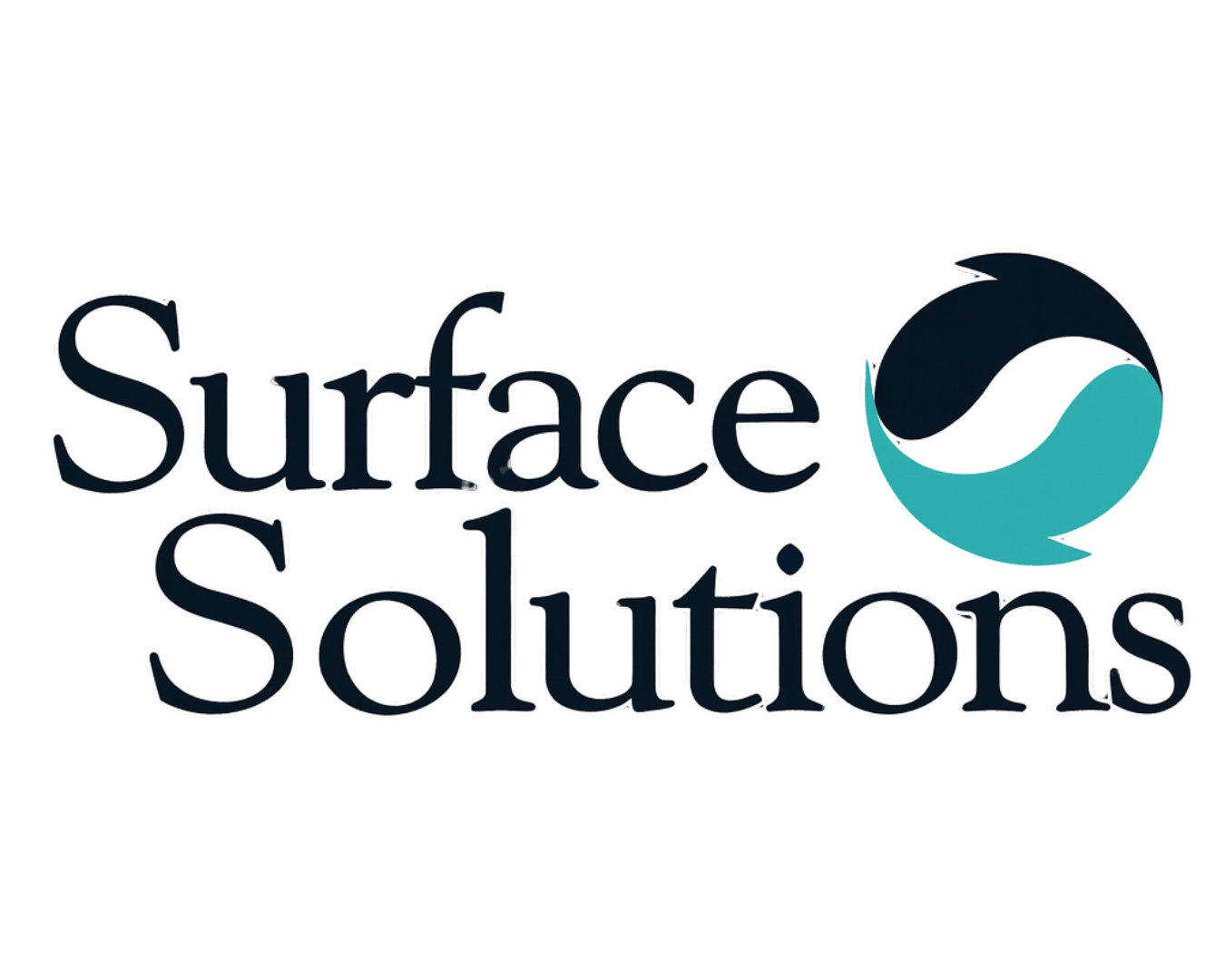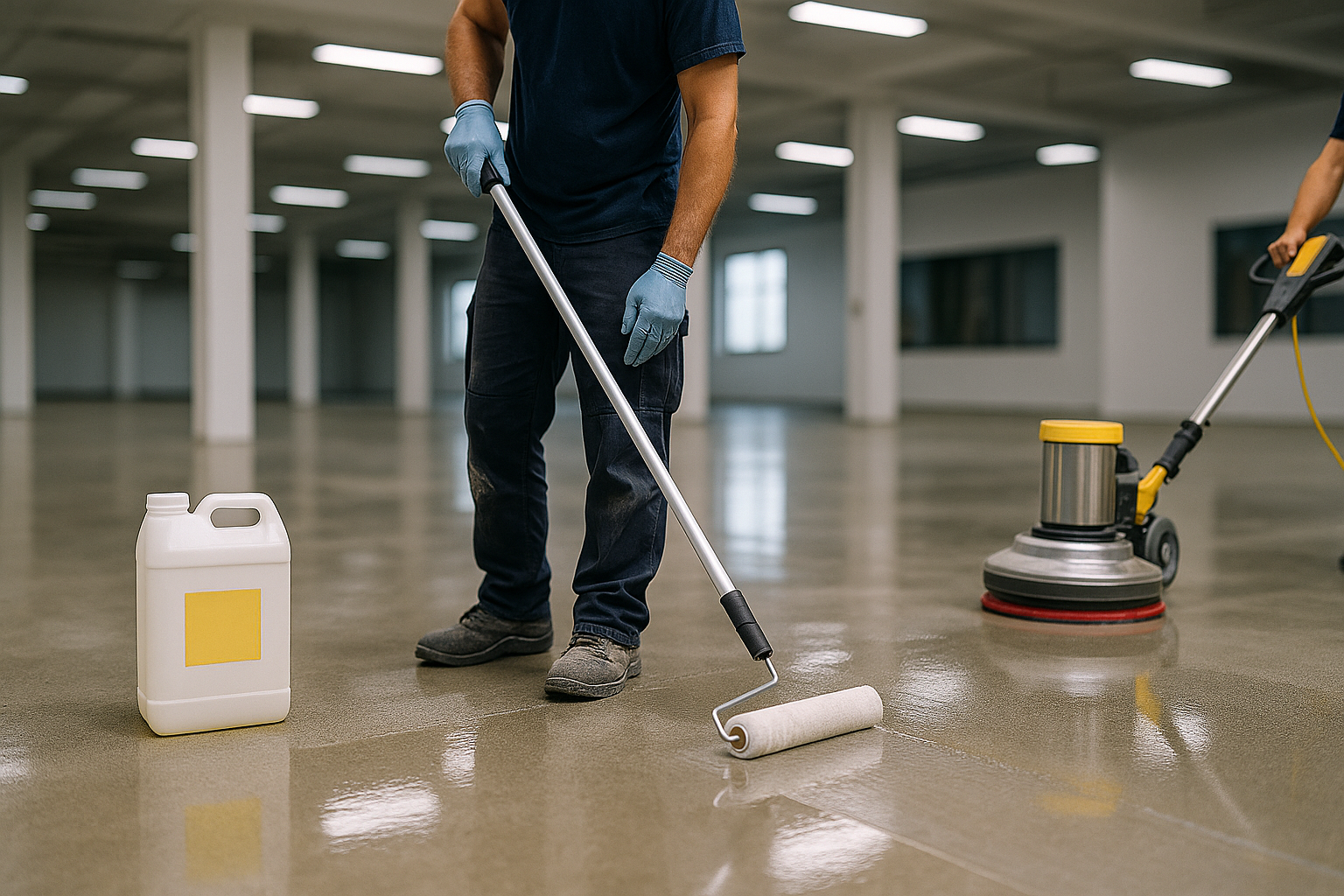Understanding Floor Wear
Concrete and resin floors wear gradually. The topcoat — whether a guard, sealer, or epoxy layer — is designed to take the abuse first. But once that layer is compromised, damage quickly migrates into the substrate.
Common signs of surface fatigue include:
- Dull or uneven sheen
- Scratches or abrasions
- Stains that no longer clean easily
- Slippery or powdery texture
- Exposed aggregate or pinholes
Ignoring early wear leads to higher costs later. The goal is to intervene before the surface integrity breaks down.
Re-Seal vs. Re-Coat: What’s the Difference?
While the two terms are often used interchangeably, they serve very different purposes.
Re-Sealing
Re-sealing involves applying a thin, protective layer to restore gloss and repel moisture or chemicals. It’s typically used for:
- Polished concrete floors with penetrating guards
- Light-duty epoxy systems with UV wear
- Routine maintenance intervals (every 12–24 months)
Think of re-sealing as polishing your car’s clear coat — it preserves what’s underneath.
Re-Coating
Re-coating is a more involved process that renews the performance layer. It includes light abrasion or sanding before applying a new coating. Ideal when:
- The top layer is visibly worn or peeling
- The floor experiences heavy traffic or chemical exposure
- Surface gloss or color cannot be restored by sealer alone
Re-coating can add years to a floor’s life when performed before damage reaches the substrate.
How to Know Which Option You Need
Step 1: Visual and Gloss Assessment
If the floor has lost shine but is otherwise intact, re-sealing may suffice.
Step 2: Adhesion and Surface Integrity Check
If the coating is peeling or blistering, it’s time for a re-coat. Adhesion tests can confirm whether the substrate is still sound.
Step 3: Chemical Exposure Review
Environments with frequent cleaning, grease, or acids (like food processing) may require periodic re-coating regardless of visual wear.
Step 4: Slip Resistance Testing
If COF (Coefficient of Friction) drops below safety thresholds, resurfacing is often the best route.
Typical Lifespans and Intervals
Flooring Type
Maintenance Cycle
Expected Service Life
Polished Concrete
Re-seal every 12–18 months
10–20 years
Epoxy Coating
Re-coat every 3–5 years
8–12 years
Urethane Cement
Re-topcoat every 5–7 years
15+ years
Proper cleaning and burnishing can stretch these timelines significantly.
The Role of Preventive Maintenance
Surface Solutions offers maintenance programs that include:
- Periodic burnishing and sealing
- Routine inspections for wear
- Spot re-coating in high-traffic zones
- Joint and crack re-filling
These proactive steps reduce long-term costs and help maintain warranty compliance.
Case Study: Distribution Center Renewal
A 100,000 sq. ft. distribution center in New Jersey was experiencing uneven gloss and minor delamination. Instead of full replacement, Surface Solutions re-coated only the most worn traffic paths, saving the client 60% over a full resurfacing project — and avoiding a week of downtime.
When It’s Too Late for Either
If the coating has completely failed or the concrete beneath is compromised, re-sealing or re-coating won’t solve the problem. In those cases, full resurfacing or system replacement is required.
The key takeaway: Don’t wait until you can see the damage.
The Long-Term Payoff
Routine re-sealing and re-coating are minor expenses compared to full replacement. They keep your floor compliant, safe, and professional — protecting your investment for decades.
Call 877-CSTM-FLR
Email carolina@cstmflr.com
Visit www.cstmflr.com


.png)
